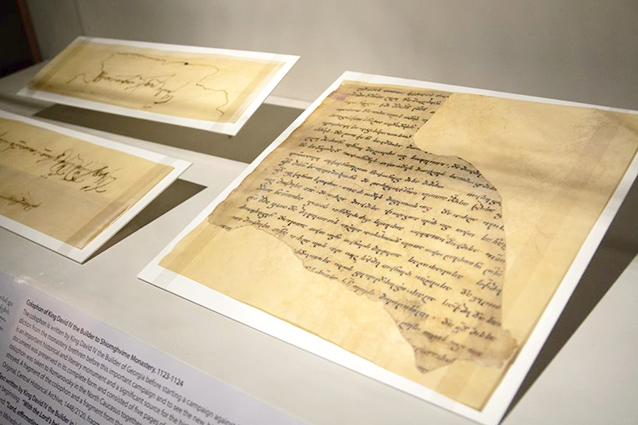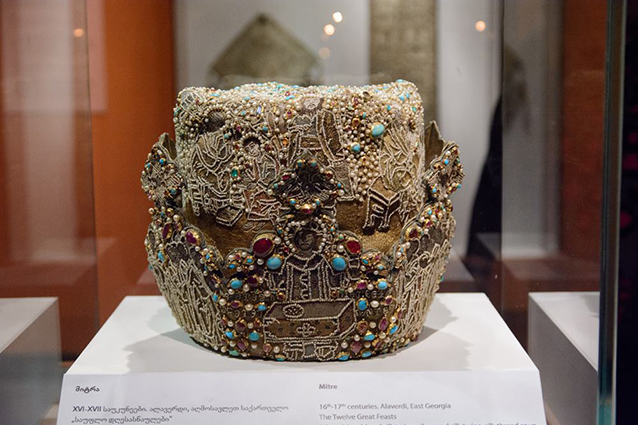See Georgian medieval King David’s will on first-ever display in Tbilisi

The only surviving sample of the will of one of Georgia's most famous medieval kings is now on display that presents the country's literary, scientific and artistic riches from the era to viewers in capital Tbilisi.
Opened in June this year, the exhibition Georgia's Medieval Treasury has been visited by history enthusiasts looking to find some of the most important Georgian manuscripts and books from the Middle Ages.
Now the display held at the Simon Janashia Museum of Georgia will also boast a fragment from the only preserved original piece of the will of King David IV, also known as David the Builder (1073-1125).

The king's will was written in Mkhedruli, one of three Georgian writing systems recognised by UNESCO as part of the Intangible Cultural Heritage of Humanity this year. Photo by Gela Bedianashvili/Culture Ministry of Georgia's press office.
The ongoing exhibition was updated with the precious historical item by organisers from the National Archives of Georgia and Korneli Kekelidze National Centre of Manuscripts on December 26.
Written by the king known as the monarch who unified Georgia during the turbulent medieval era, the will was dated back to 1124, prior to David the Builder's military campaign to the South-East Caucasus state of Shirvan.
The manuscript was written by the Georgian king in Mkhedruli, one of the three writing systems of the Georgian alphabet added to the UNESCO List of Intangible Cultural Heritage of Humanity last month.
The Georgian king died from illness after returning from the campaign to Georgia, a year after leaving the will.

An 18th-19th Century Georgian medical encyclopaedia and collection of medical instruments photographed at the display. Photo by Gela Bedianashvili/Culture Ministry of Georgia's press office.
The manuscript will be displayed to the public in Tbilisi for the first time, said the Ministry of Culture and Monument Protection of Georgia.
Other historic pieces featured within the ongoing display include 12th to 17th Century religious manuscripts as well as some of the earliest examples of Georgian medical encyclopaedic research and historical volumes on the late medieval Kingdom of Kartli.
The display Georgia's Medieval Treasury features samples of artistic and literary creations from Georgia's early Christian age and medieval period.

A 16th-17th Century mitre from the Alaverdi Eparchy of eastern Georgia is part of the medieval collection. Photo by Gela Bedianashvili/Culture Ministry of Georgia's press office.
The items "illustrate the unified nature of cultural traditions" that served as basis of Georgia's statehood and national identity, said the Culture Ministry.
Organisers of the display said the items within the medieval exhibition would be constantly updated to present the diverse nature of the collection until its conclusion in March 2017.
 Tweet
Tweet  Share
Share